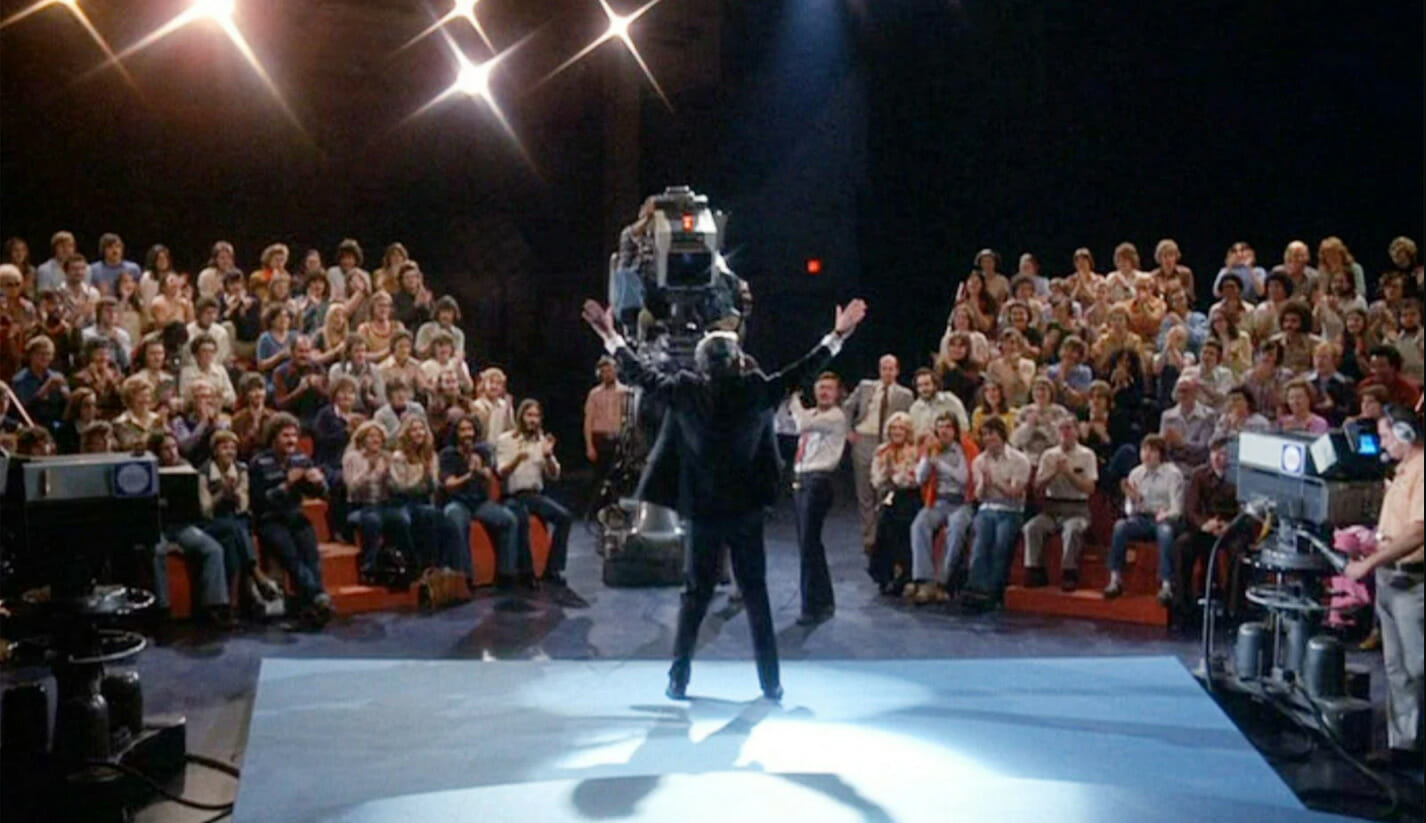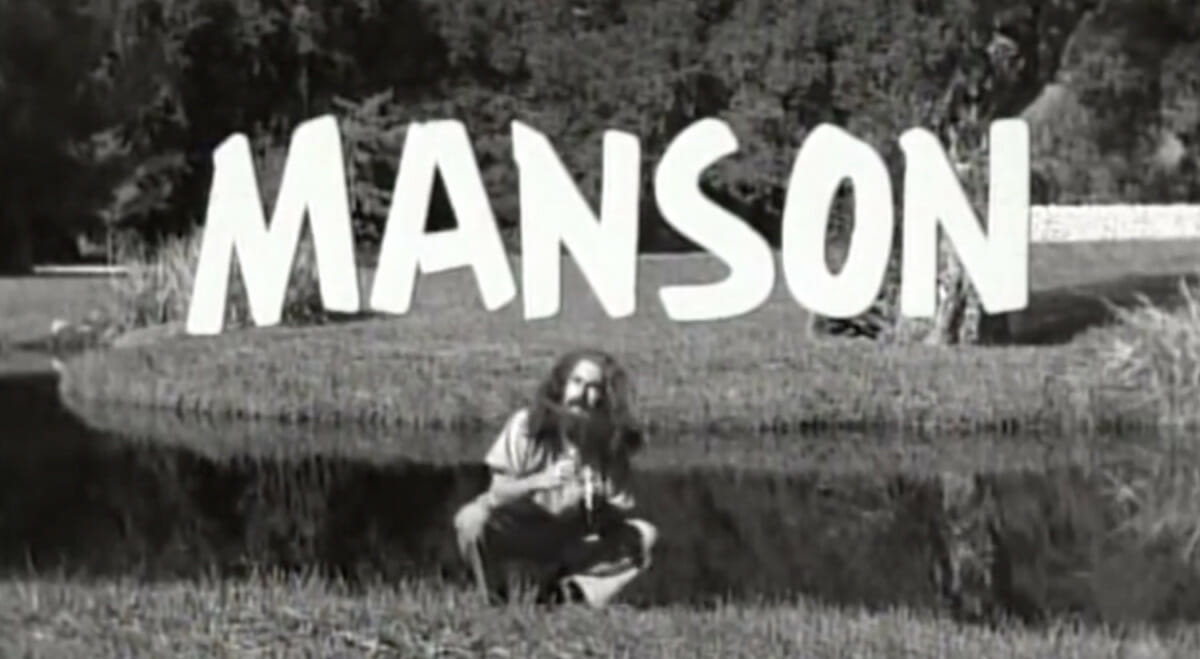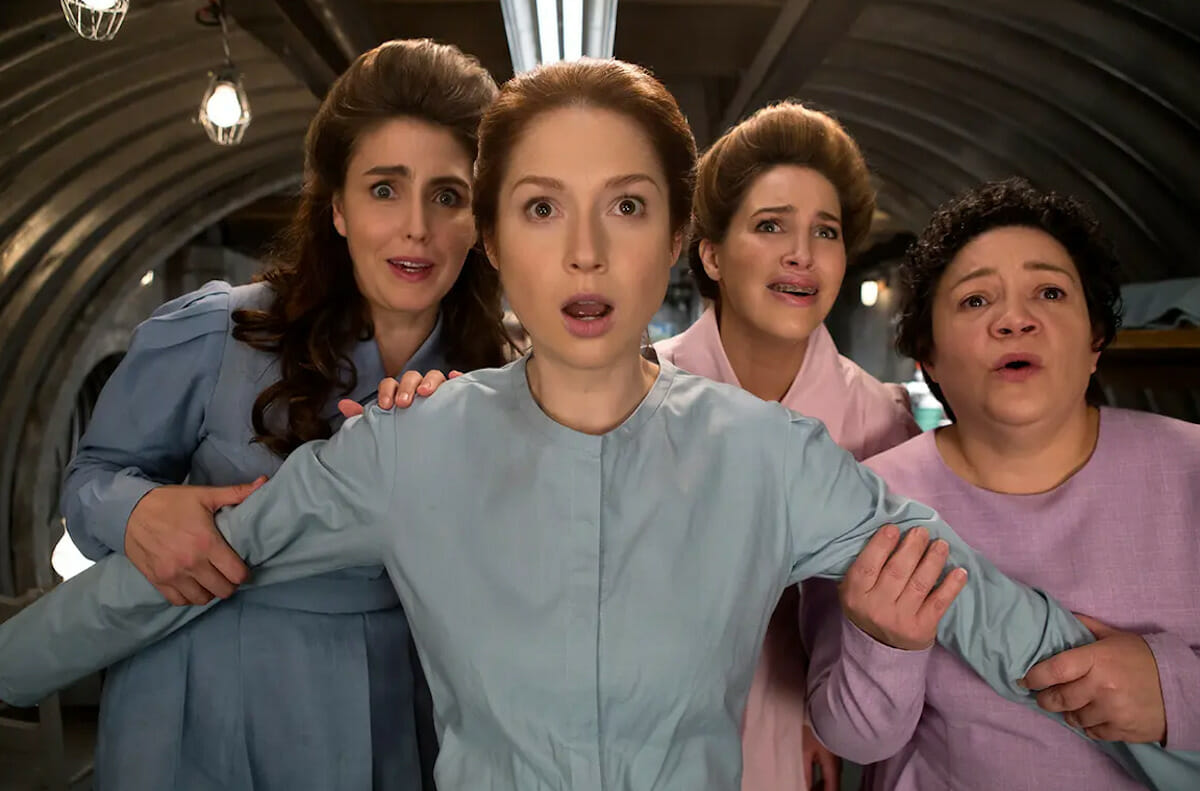Cults are an inextricable part of the history of the U.S. – an American institution that has been going strong since colonial days, integrating itself not just into our history but into our popular culture as well. From lurid, but ratings-rich, news stories about cult mass suicides to populist politicians, demagogues have a way of grabbing the public’s attention.
At some point, though, widespread cautionary tales about the threat presented by cult leaders transformed into lighthearted, even outright comedic, entertainment. When did we become so comfortable with the presence of demagoguery that we not only began to laugh at it, but seemingly began to invite it to join us when its presence was missed?
As unlikely as it may seem, there has long been an unlikely crossover between cults and popular culture. The Manson Family murders of August 1969 is familiar to many because one of the five victims was actress Sharon Tate. However, Charles Manson, the leader of the cult who reportedly told followers that they should break into Tate’s residence and “destroy everyone in it – as gruesome as you can,” had another claim to pop culture fame: he was an aspiring musician who had lived in Beach Boys drummer Dennis Wilson’s beach house at one point, and even auditioned for the Monkees.
Two years later, members of the Californian cult Synanon II appeared onscreen as background characters in Star Wars creator George Lucas’s 1971 movie THX 1138. Synanon had been founded as an addiction recovery program in the late 1950s, before becoming a utopian commune and eventually a full-blown religious cult rebranded as “Synanon II.” THX casting director Ronald Colby, searching for women willing to go bald to appear as extras in the movie, was delighted to find a group of women who had already shaved their heads in an attempt to emulate their leader Charles “Chuck” Diedrich’s own lack of hair.
By that point in time, cults had become a fixture in American newspaper headlines and evening news broadcasts – something about demagogues and the masses who followed in their wake titillated and fixated the folks at home, apparently. Ironically – given the circumstances of things like Jim Jones’ People’s Temple, whose massacre will go down in history as one of the largest cult deaths – people were drinking the Kool-Aid. Naturally, it was only a matter of time before the concepts began to directly inform fiction.
Sidney Lumet’s 1976 film Network was characterized at the time, as the movie poster slogan puts it, as “perfectly outrageous.” From a 2022 point of view, it seems more “perfectly prescient.” Peter Finch plays Howard Beale, a news anchor for fictional network UBS forced into retirement until he vows to commit suicide on-air – an event that garners the attention not only of television viewers, but also the side-showmanship sensibilities of Diana Christensen (Faye Dunaway), a sociopathic rising executive.
As executives at UBS hitch their wagon to the increasingly demagogic star, the combination of Beale’s unbridled vitriol and Christensen’s lurid, amoral sensibilities proves to be a recipe for ratings gold. It isn’t long until Beale has demonstrated the intense power he holds over the audience: he not only successfully commands his massive audience to stand up and shout out their windows, but eventually orders a spontaneous telegramming-writing campaign so successful it could have been organized by Trekkies.
From Christensen’s purely ratings-defined perspective, things only being to go wrong with the chaotic Howard Beale Show when communications executive Arthur Jensen (Ned Beatty) attempts to harness Beale’s magnetic persona and inexplicably effective oratory acumen towards his own literally religious brand of capitalism… and even then, Christensen only cares because of departing audiences, never pausing to lament any of other potential damage wrought by Beale’s nationally broadcast cult of personality.
In Network, fictional executives capitalized off the fixation with cults and cult personalities, going so far as to have Christensen even negotiate with terrorists for a show based around a revolutionary protest of the week format, but it was explicitly a cautionary tale on behalf of everyone involved. While Christensen may be indifferent to the destruction she leaves in her wake, the audience is clearly meant to be somewhat taken aback at the network’s willingness to platform any message that earns them a bigger share of the TV market.
At some point, though, cults and demagogues stopped being cautionary tales and crossed the line into pure entertainment – potentially as a result of popular culture investing more time and energy into creating cults around the latest star figure in music or movies. Consider the fervor that surrounded Elvis or Michael Jackson in their prime; how is that concept of fandom so different from a cult follower’s belief in their leader?
Even as the line between celebrity and cult leader was becoming blurred, so was the notion of what was considered acceptable in terms of entertainment. The mainstream acceptance of so-called “edgy” comedy – which in the U.S. can be traced all the way back to the 1960s rise of Lenny Bruce, followed by the success of a new wave of comedy championed by the National Lampoon and, subsequently, Saturday Night Live – allowed audiences to become more comfortable with topics and ideas that would once have been considered unacceptable or taboo… in the process, priming audiences to accept cult leaders into their fiction as something other than a figure of fear or derision.
Cult figures have played prominent roles in many of the books in novelist Chuck Palahniuk’s oeuvre, with two significant examples being 1996’s Fight Club and 1999’s Survivor.
Survivor centers around Tender Branson, a survivor of the Creedish Church suicide cult. The Church’s doctrine conditioned its members for a life of menial labor and servitude, along with the directive to kill themselves when signaled to do so. A decade before the novel is set, the signal had been issued, but Branson survives thanks to the fact that (as a younger-born child), Creedish doctrine decreed that he must leave the church district colony and live his life in the larger world.
As the final surviving member of the cult, Branson stands to gain notoriety. Eventually, Branson is soon stepping into the role of religious leader himself. Like Beale, Branson uses television to spread his message, and just like Beale, Branson’s empire collapses by the story’s conclusion, largely due to circumstances beyond his control. However, in contrast to Network, Branson isn’t necessarily a cautionary tale, as narrative details and Palahnuik’s own statements suggest that Branson survives the disaster at the end of the book, going on to live a happy life.
In contrast, Tyler Durden’s empire remains alive and well after the conclusion of Fight Club, even if the cult leader himself is apparently imprisoned within the narrator, Durden’s dissociative alternate identity. Even if you haven’t read the novel, chances are you probably know the name “Tyler Durden,” possibly from David Fincher’s successful 1999 movie adaptation, or possibly due to the fact that, in spite of the fact that he is a fictive cult leader, Durden has actually inspired plenty of real-world action.
An edition of the novel released a few years after the influential movie had been released on video included a new foreword by Palahniuk reflecting on the degree of Durden’s penetration into the American male psyche. Palahniuk writes that part of the reason he wrote the book was that “the bookstores were full of books like Joy Luck Club and The Divine Secrets of the Ya-Ya Sisterhood,” but no equivalent existed for the masculine perspective.
The fact that the club which Palahniuk created to fill this void became synonymous with a cult of personality venerating Durden – not just in the realm of the novel, but through real-world appearances of the character’s name cited in the foreword like printer label packages and airport PA announcements – demonstrate the potency cult leaders can hold over the American psyche, even when said cult leaders are fictional characters.
The idea of the “cult leader” looms so large in the collective imagination that some reality-inspired entertainment even takes it upon itself to add in such a figure, even when they weren’t present in the original real world event that served as inspiration.
In the Netflix series The Unbreakable Kimmy Schmidt, the first season of which was released in 2015, the eponymous protagonist played by Ellie Kemper is the survivor of a doomsday cult who has escaped from captivity in Indiana. According to Kemper, her performance was based on Elizabeth Smart, who was kidnapped from her bedroom at knifepoint at age 14; she was subsequently held captive and regularly raped for nine months before being rescued by police after witnesses who recognized the couple that kidnapped her from an appearance on America’s Most Wanted identified her captors.
While no “cult leader” figure was involved in the real-life story, one was added for The Unbreakable Kimmy Schmidt’s narrative: Reverend Richard Wayne Gary Wayne, played by Jon Hamm, whose backstory involves manipulating Kimmy and two other women he’d similarly lured into his bunker, by convincing them they cannot leave because they are the sole survivors of an apocalyptic event. While the idea of this manipulation is terrifying in theory, Reverend Wayne is not portrayed as a menacing or dangerous figure, instead being mined for laughs, including due to his propensity for biblical malapropism.
Although Smart’s experiences were certainly not the only real world inspiration for the series – the show included attorneys played by Tina Fey and Jerry Minor who share names with the lead prosecutors in the O.J. Simpson case, as well as a character played by Fred Armisen based on serial killer Robert Durst. Nevertheless, it seems telling that the creators felt obliged to add the cult leader element to the show’s narrative, and further, to present the character in what might be considered a reasonably non-threatening manner.
Cults have crossed from horrific news items to casual entertainment fodder in the cultural consciousness. More troubling still, they seem to have become such a fixture that in the absence of an actual cult personality to latch onto, people seem just as apt to follow an invented one. And considering the lengths to which those under the thrall of a cult leader have shown themselves to be “willing” to go, the danger in that proposition should be self-evident.
It’s easy to say that cults have, in fact, created their own cult of personality just by existing in ways that seem too cruel and warped for reality but are the crux of what makes for extremely effective fiction. With both things proven unfortunately true, this morally gray-area of pop culture suggests that maybe tragedy plus time really does equal entertainment.



